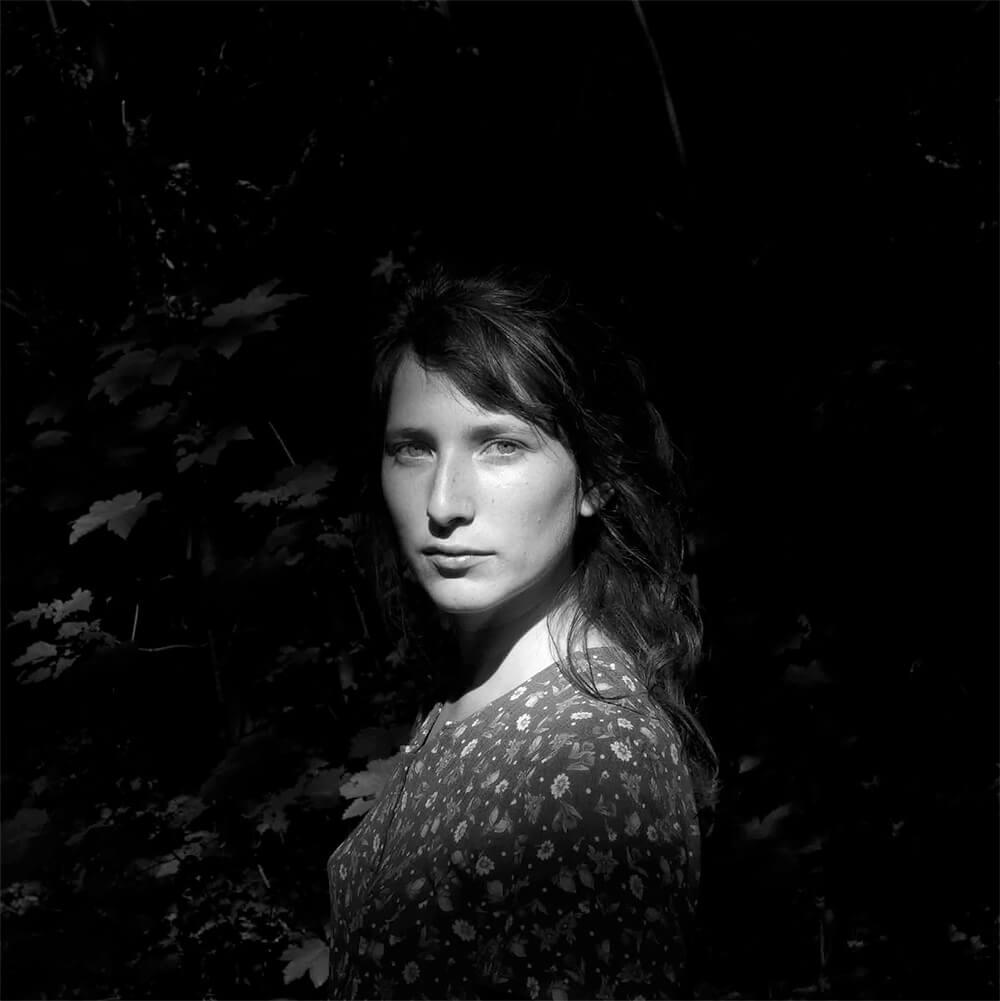Born 1991, Lublin, Poland, Wiktoria Wojciechowska lives and works in Lublin and Paris. Graduated from the
Academy of Fine Arts in Warsaw, Poland, Wiktoria was the 2015 winner of the
Oskar Barnack Leica Newcomer Award for
Short Flashes, portraits of drenched cyclists captured on the streets of Chinese’s metropolis.
Between 2014 and 2016 she worked on the series
Sparks, a portrait of a contemporary war based on the stories of people living in the Ukrainian conflict. This series received several awards, such
Rencontres Internationales de la Photographie New Discovery award’s public prize,
Madame Figaro prize and the Prix pour la Photographie, Fondation des Treilles.
Labirinto (2017-2019)
Labirinto explores the architecture seen as a vector for an ideology, spreading in the inhabitants' thoughts. Architecture stays longer than its creators and might still smuggle fundamental ideas and atmosphere of passed days.
Labirinto project is a starting point to discuss how the architecture influence inhabitants and if a city, structured as a symbol of fascist ideology, can become a dwelling for strangers.
Wiktoria Wojciechowska works in the area of Agro Pontino in Italy: formerly marshes, which were, throughout centuries, a challenge for the authorities. The Romans, Popes and Napoleon have all tried to drain, recultivate it and build new settlements. The one who achieve the goal was Benito Mussolini, with the help of the hard work of World War I combatants.
At the beginning of the '30s, the project of the foundation of the
New Cities (Città nuove) started. The best Italian architects of these times were involved to draw the net of streets on the Pontine plain as on a blank page. They were to arrange the monuments and neighborhood buildings - following the current of rationalist architecture, adopted by the fascist as the official style of the ideology - of five cities: Littoria, Pontinia, Sabaudia, Aprilia and Pomezia. Designed in the model of "the rural city", they should serve as a renewal of civilization (Bonifica della cultura) and the so-called Mussolini's Arcadia for a "purified nation" of New Italians.
This is how Littoria has been conceived, in 1932, from the mud and has been raised as the first of the five Mussolini's New Cities. Littoria was called the "jewel of Mussolini" and radiated by the combination of a stellate network of streets and curved ring roads, all converging towards the central square (Piazza del Littorio, now Piazza del Popolo). The labyrinth-like city was awaiting the new residents coming from the entire Italy to live in the empty buildings and appreciate the monumental solutions drawn upon the Roman Empire tradition.
After World War II, the city was rebaptized to Latina to obliterate its fascist past and became a temporary asylum for displaced Italians and migrants. Between 1957 and 1991, 80 000 foreigners passed by the refugee camp. They were coming from Eastern Europe, fleeing the communist regimes, from Vietnam, Northern Africa, etc. Despite the official closing of the camp in 1991, migration is still an ongoing process. Today, the majority of newcomers originate from sub-Saharan Africa, Nigeria, Gambia, Ghana, Mali…
The artist describes her work: In the middle of the day, during "the siesta", when the city is hot and stuffy, the streets become empty. The pale facades of the buildings reflect the sunlight like mirrors and hurt the eyes. As in De Chirico's paintings, the palisades are playing with lights and shades. The emptiness creates an illusion that we are back in the 30s. Only the scratches and colored patches on the walls unmask the timeworn city. From time to time, human figures flash by in the sun. These are those who get lost in this labyrinth, not knowing the rules of the city. They barely arrived there, but who gets into the labyrinth once, might not be able to wriggle out ever.
Today in front of Palazzo M - built in the shape of the initial of Mussolini, a queue of immigrants is standing and waiting for their documents.
Wiktoria Wojciechowska observes the city - silent witness of changing times - and recent immigrants, far from being integrated. During the conversations, they often mention the discrimination, preconceived ideas, and the fear of locals; their superiority coming from the colonial past, racism. They feel suspended, awaiting decisions and documents, trapped in the city space. The locals expect to move the immigrants out of the cities; they are not to be seen, as they "change the landscape", they should be invisible. The ideology, which sponsored the construction of the cities, is still lying under their foundation. Hidden but yet vivid, deep inside the consciousness. Looking further,
Labirinto can be the metaphor of the current sociopolitical situation of all Europe, where newcomers from other continents are seeking asylum and acceptance. The fear of locals (who might have been migrants too) remains, and politics don't promote reconciliation. The policy of fear enables the authorities to seize control of the population's thoughts and define the enemy.
The works of Wiktoria Wojciechowska are juxtaposing the fascist architecture - undefined corners of streets, scattered walls, and remains of fascist sculptural iconography - and the portraits of recently arrived migrants. As they wander through a temporarily deserted city, occupying the scene of a petrified ideology, the public space, they reveal a striking contrast with this ideology embodied in the architecture.
